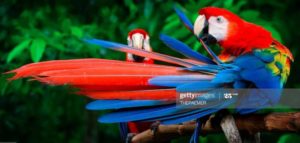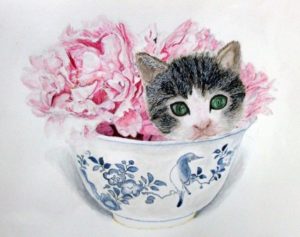How to Paint a Fox monkey with Watercolors/art.jp.net
著作権表示
ここに掲載されている透明水彩画は、マルチェロ・バレンギ氏のオンラインスクール
が提供する写真を使用して制作された細密画です。
copyright notice The transparent watercolors shown here are
miniatures created using photographs provided by Marcello Barenghi’s online school.
キツネザルの細密画作成
Draw a fox monkey with watercolors
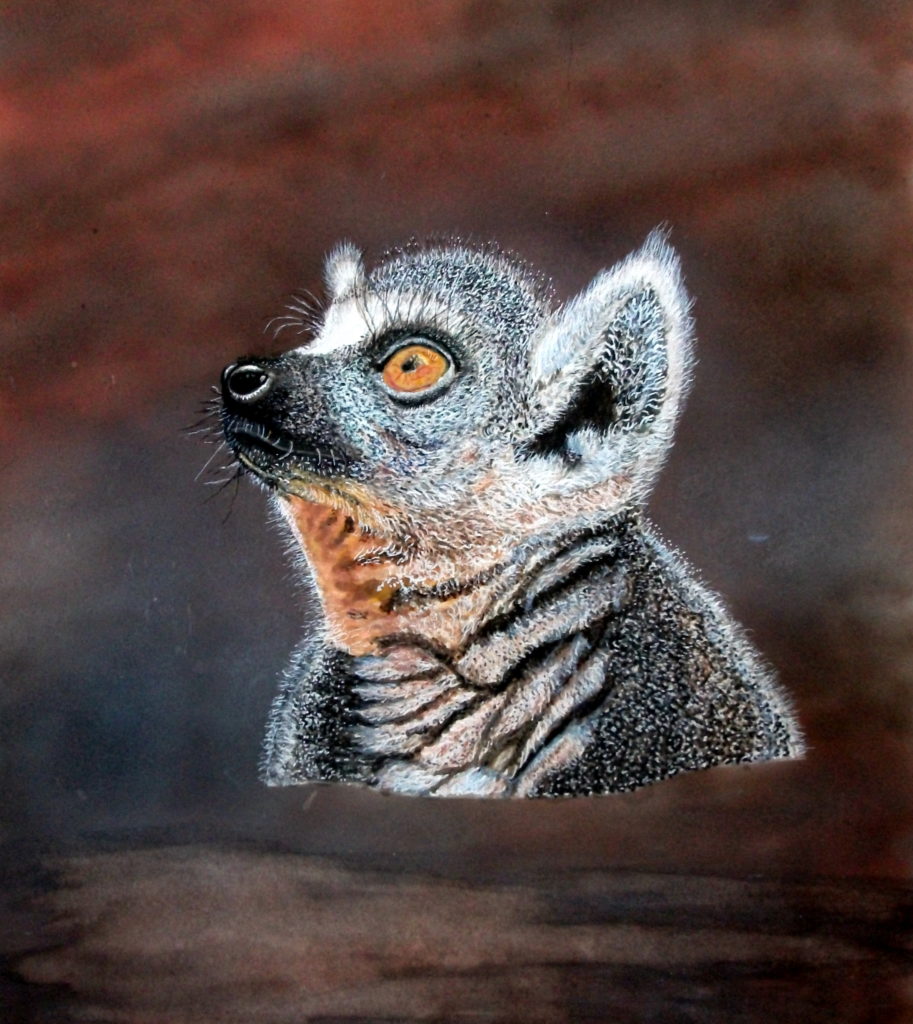
先生からのアドバイス
ツールに関しては、ブランドに関しても色に関しても、私が使用するのと同じ色を使用する必要はありません。同様の色を使用できます。色のわずかな違いは結果に影響しません. また、実行中の不愉快な驚きを避けるために、描画を開始する前に必ずいくつかのカラー テストを行ってください。
この絵は見た目ほど難しくありませんが、本当の難しさは髪の毛による繰り返しです。そのため、時間をかけて数日かけて行うことをお勧めします。もう1つの難しい部分は、毛皮のふわふわ感を生み出す首の下のピンクの色合いです.
ここでは、エアブラシを使用して背景を作成しました。エアブラシの代わりに、暗い色のベース コートをエコラインなどで塗り、色鉛筆の粉を指でこすって色合いを出すことをお勧めします。
When it comes to tools, both brand-wise and color-wise, you don’t have to use the same colors that I use. Similar colors can be used. Slight differences in color will not affect the result. Also, be sure to do some color tests before you start drawing to avoid unpleasant surprises during the run.
This drawing is not as difficult as it looks, but the real difficulty is the repetition caused by the hair. Therefore, we recommend taking your time and doing it over several days. Another tricky part is the pink shade under the neck that creates the fluffiness of the fur.
Here I used airbrush to create the background. Instead of airbrushing, it is recommended to apply a dark basecoat, such as Ecoline, and rub colored pencil powder with your finger to bring out the tint.
I drew an illustration of a lemur
キツネザルのイラストを描きました
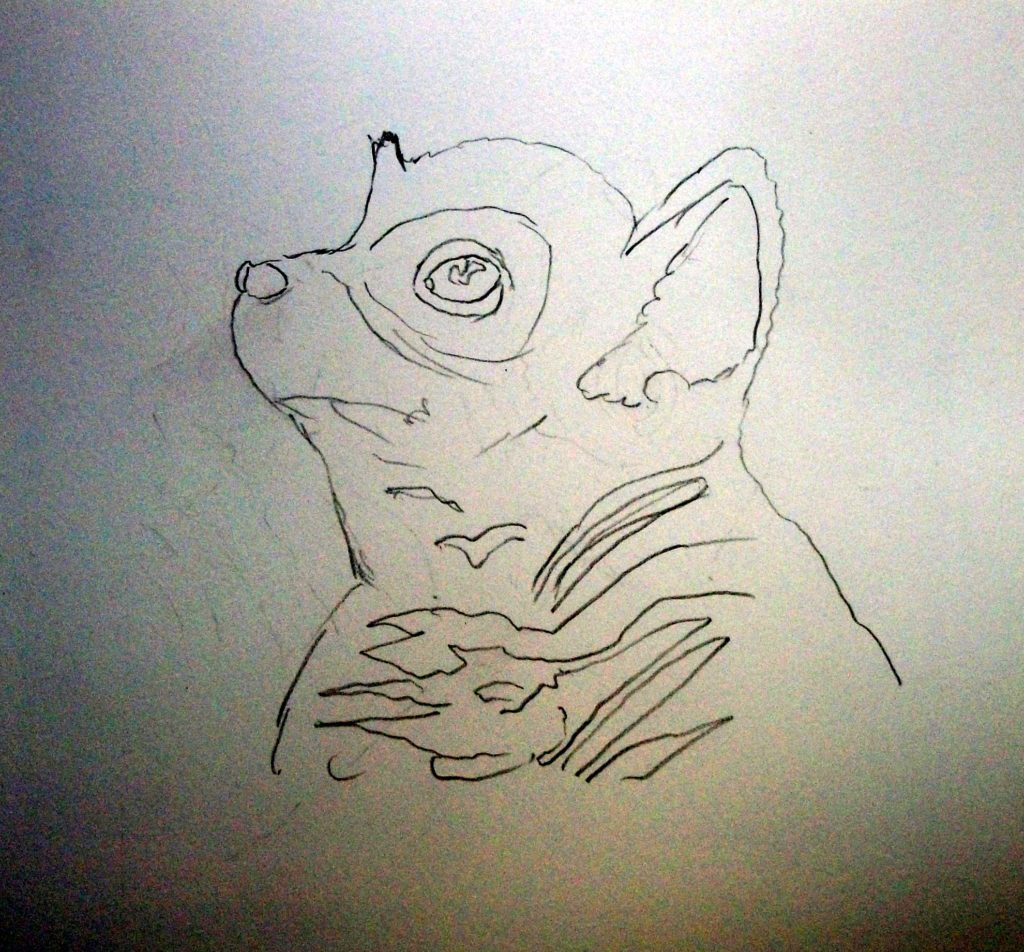
サラッと描きました、外観が分かればいいかも・・
I drew it quickly, it might be nice if you could understand the appearance…
This is the coloring of the dark parts of the lemur.
キツネザルの濃い部分の彩色です
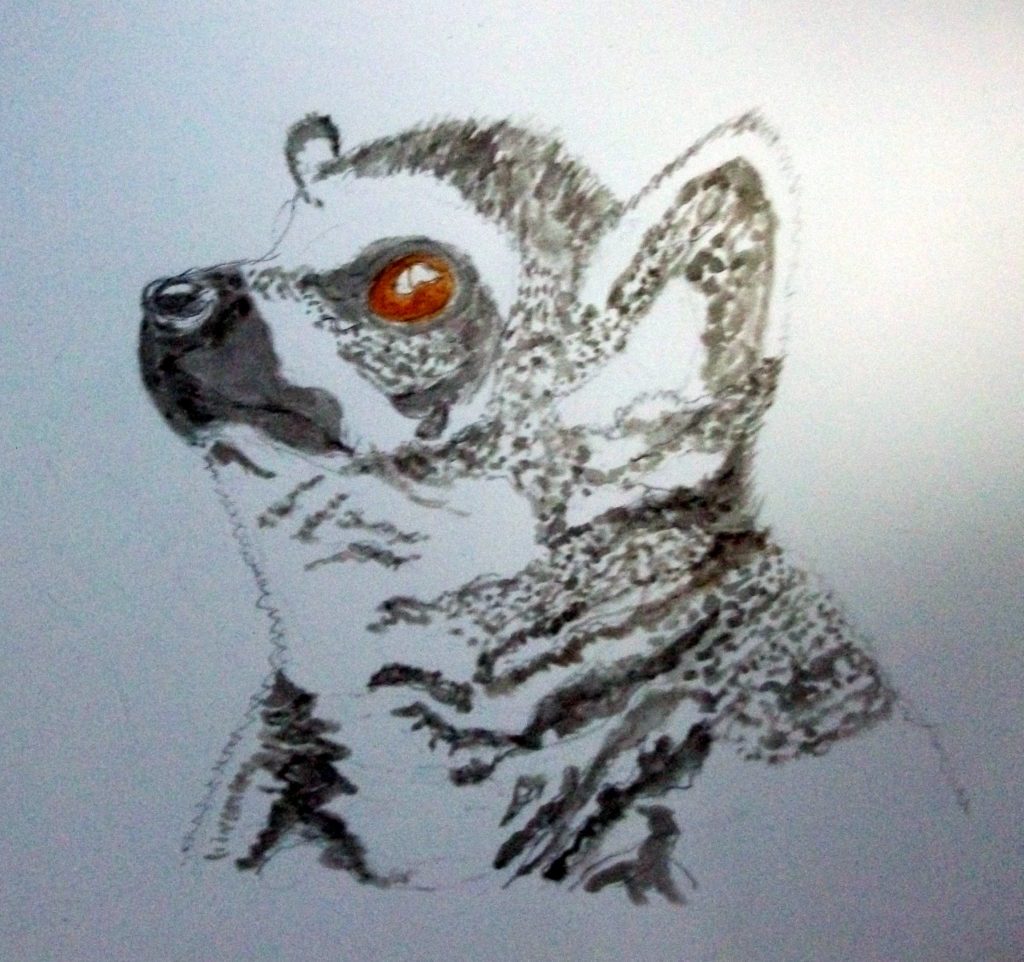
3日目 キツネザルの 黒い部分とお目目の下塗りです。
Day 3: Underpainting the black part and eyes of the lemur.
This is the coloring of the fur part of the lemur.
キツネザルの毛並みの部分の彩色です
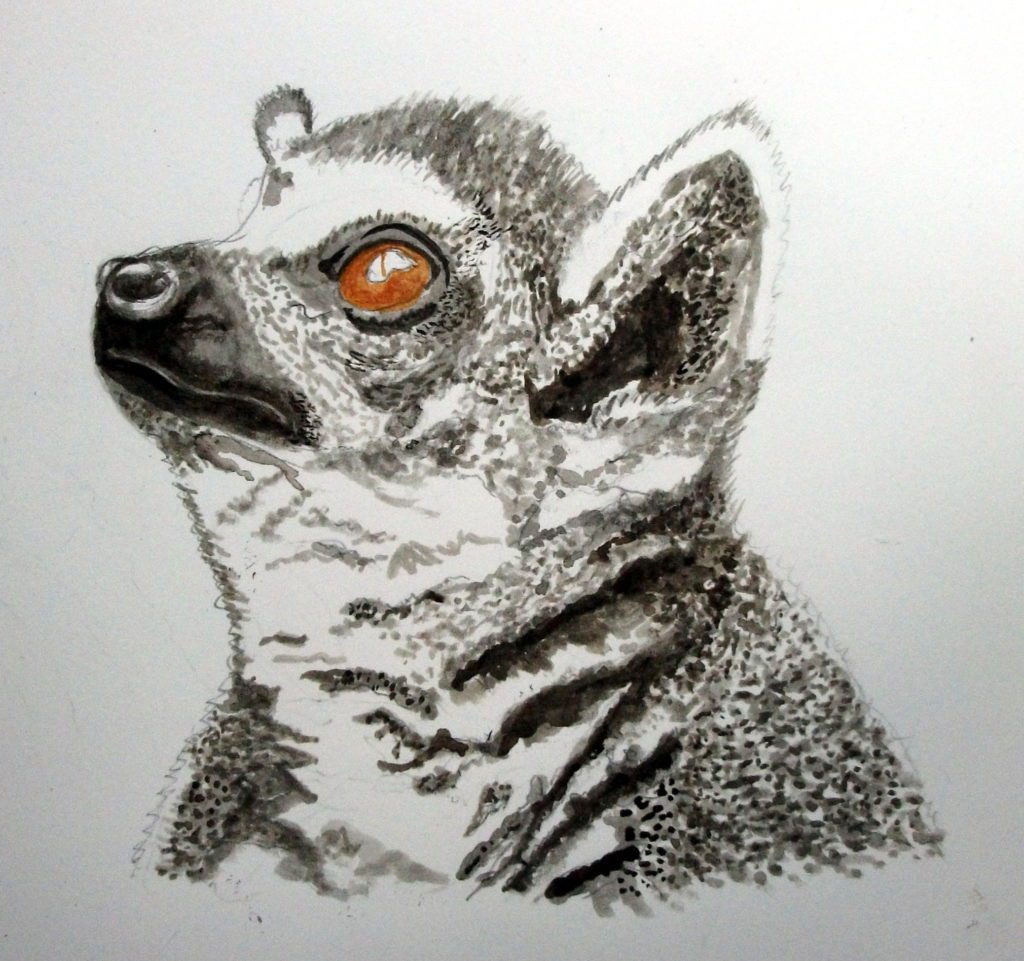
黒い部分の、斑点を丁寧に塗り上げます。口の部分がポイントです。
Carefully paint over the black spots. The key point is the mouth.
This is the coloring of the lemur’s chest.
キツネザルの胸の部分の彩色です
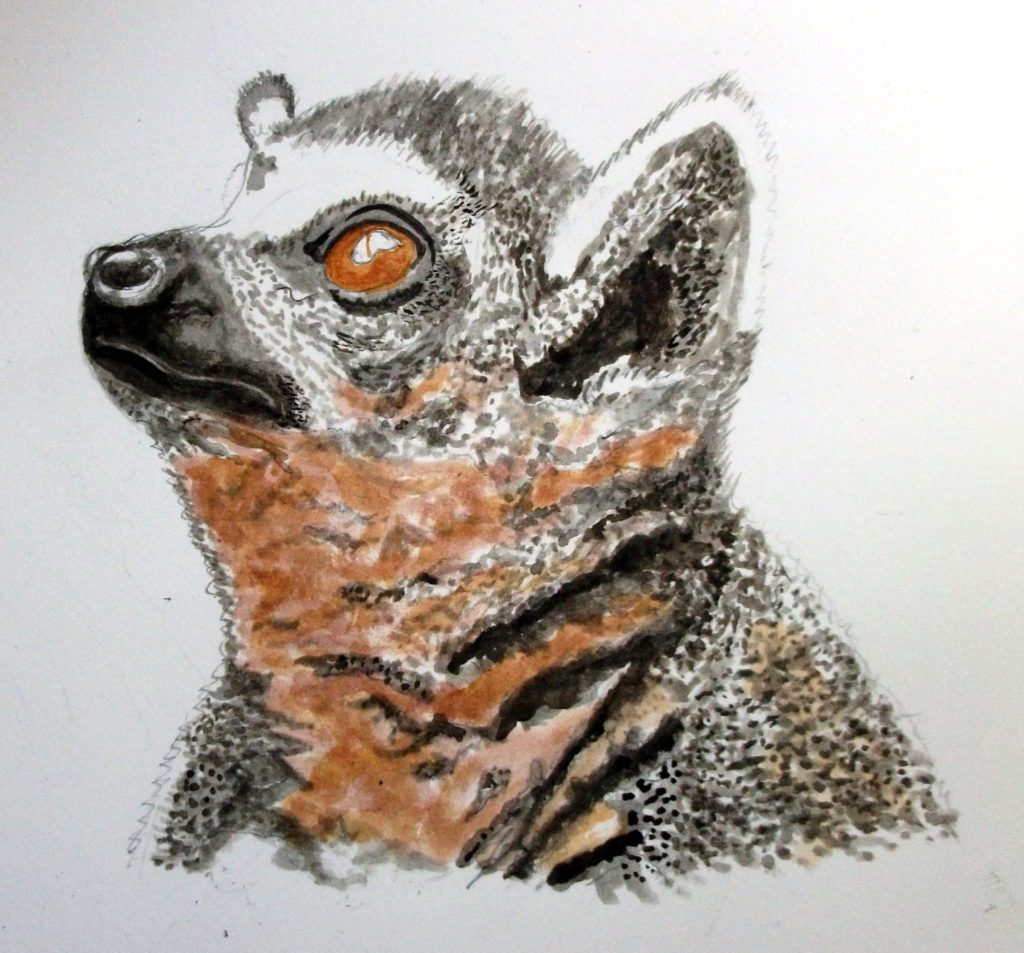
おなかの彩色です。キツネザルの毛のふさふさをどのように表現するかが課題です。
This is the coloring of the stomach. The challenge was how to express the fluff of a lemur’s fur.
This is the coloring of the lemur’s back.
キツネザルのバックの彩色です

バックの彩色です。くらい穴倉からひょっこりと体をのりだしたイメージです。
It is the coloring of the back. It is an image of the body leaning out from the hole.
Finishing the lemur’s nose
キツネザルの鼻の仕上げです
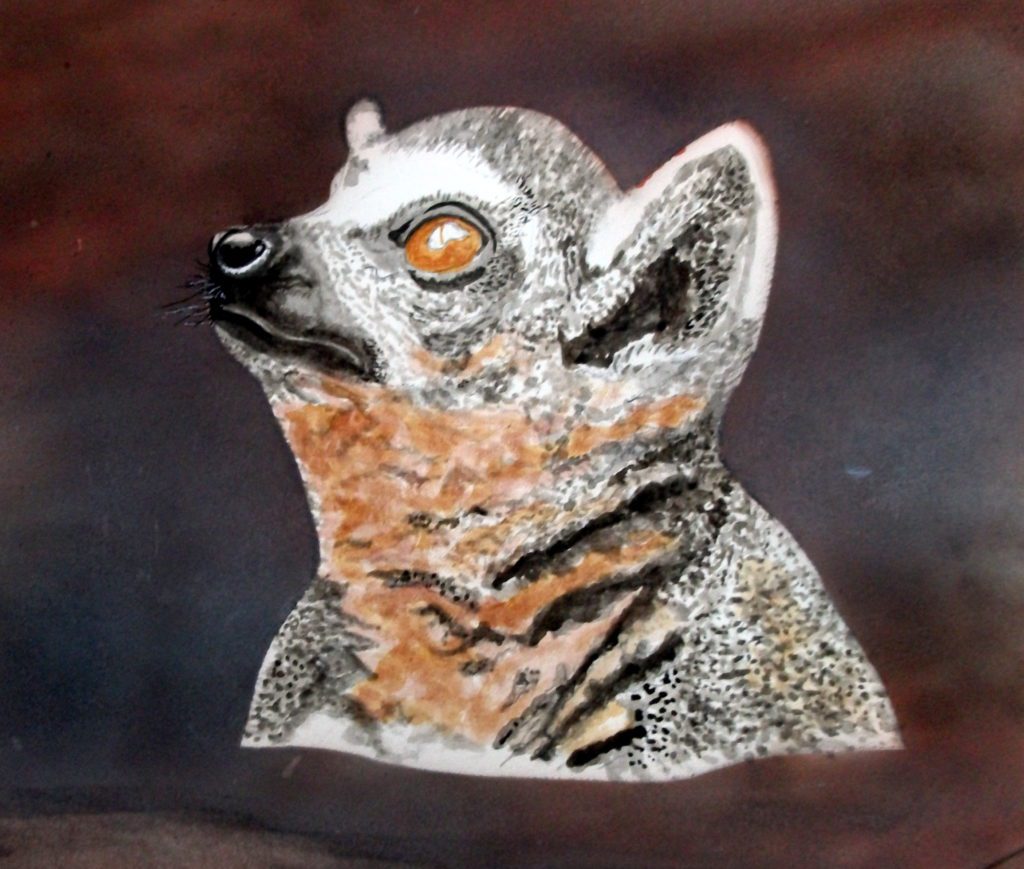
鼻の仕上げにかかりました
I finished the nose
This is the finishing touch for the lemur’s beard.
キツネザルの髭の仕上げです
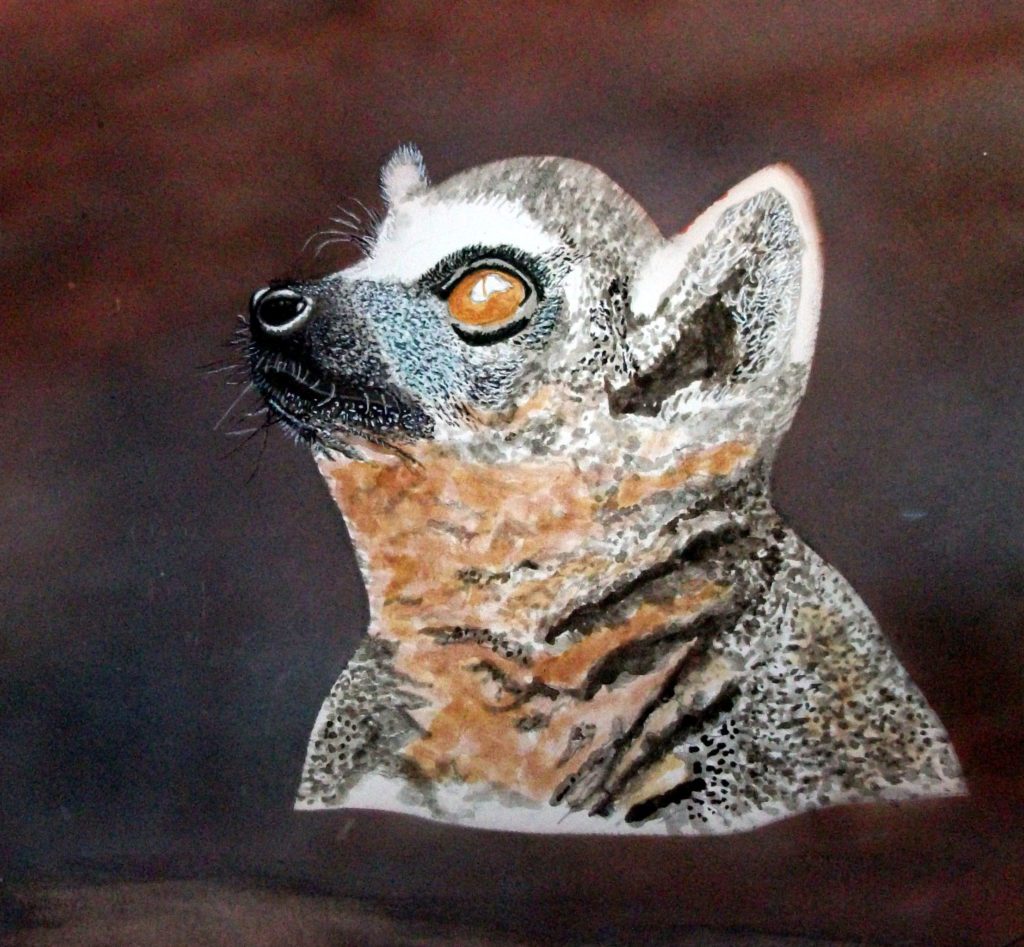
鼻の仕上げに時間がかかります。
ミリ単位の彩色です・・
It takes time to finish the nose. Coloring in millimeters…
The finish resembles the fur on a lemur’s head.
キツネザルの頭の毛並みの仕上げです

頭の仕上げです。ミリ単位の作業です。
まる1日かかりました
Finishing the head. This is millimeter-scale work. It took a whole day
Finishing the lemur
キツネザルの仕上げです
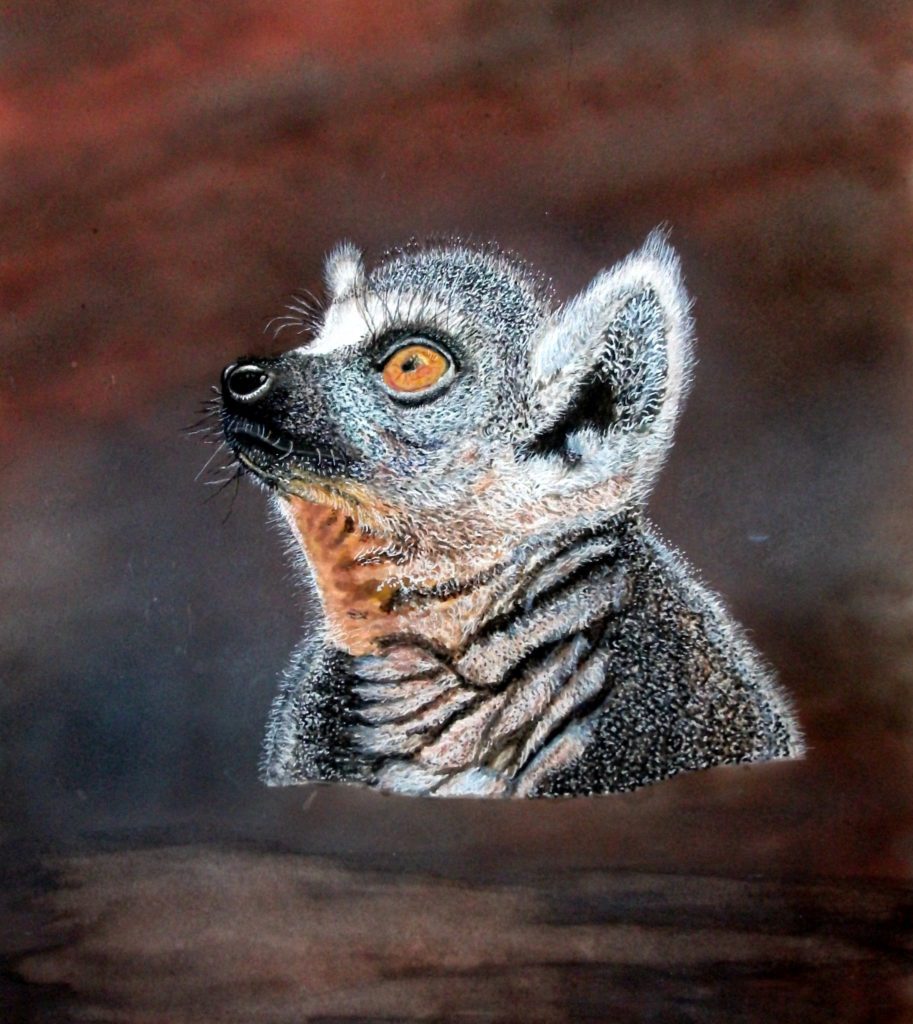
仕上げです。きつねざるの毛並みに何日もかかりました。
生き生きとした姿が描けました・・・
This is the finishing touch. It took many days to grow the fur of a fox colander. I was able to draw a vivid picture…
キツネザル(キツネ猿、Tarsius)は、霊長目に分類される小型の哺乳動物で、主に東南アジアの熱帯雨林地域に生息する猿類です。
- 外見: キツネザルは非常に小型で、大きな丸い目と長い尾が特徴です。彼らの体は小さく、繁殖時の体重は約100~150グラム程度です。体毛は一般的に灰色から茶色で、一部の種には黒い斑点が見られます。また、手と足には長くて鋭い爪があり、木にしっかりとつかまって生活します。
- 食事: キツネザルは主に昼行性で、果物、昆虫、小型脊椎動物(例: 鳥、トカゲ、小型哺乳動物)などを食べます。彼らは獲物を捉えるための素早い動きと鋭い歯を持っています。
- 生息地: キツネザルは熱帯雨林地域に生息し、主にインドネシア、フィリピン、ブルネイ、マレーシア、タイ、カンボジア、ベトナム、ボルネオ島、スマトラ島などで見られます。彼らは樹上生活を好み、夜行性の生活を送ります。
- 独自の特徴: キツネザルはその大きな目と耳を持ち、非常に敏感な視覚と聴覚を持っています。また、彼らの歌声は高い周波数で、人間の耳には聞こえにくいことがあります。彼らはまた独特の嗅覚を持ち、獲物を見つける際に匂いを頼りにします。
- 絶滅の危機: 一部のキツネザルの種は絶滅が危惧されており、森林破壊や生息地の喪失、狩猟などによって個体数が減少しています。多くの国でキツネザルの保護に取り組んでおり、国際的な保護協定にも含まれています。








